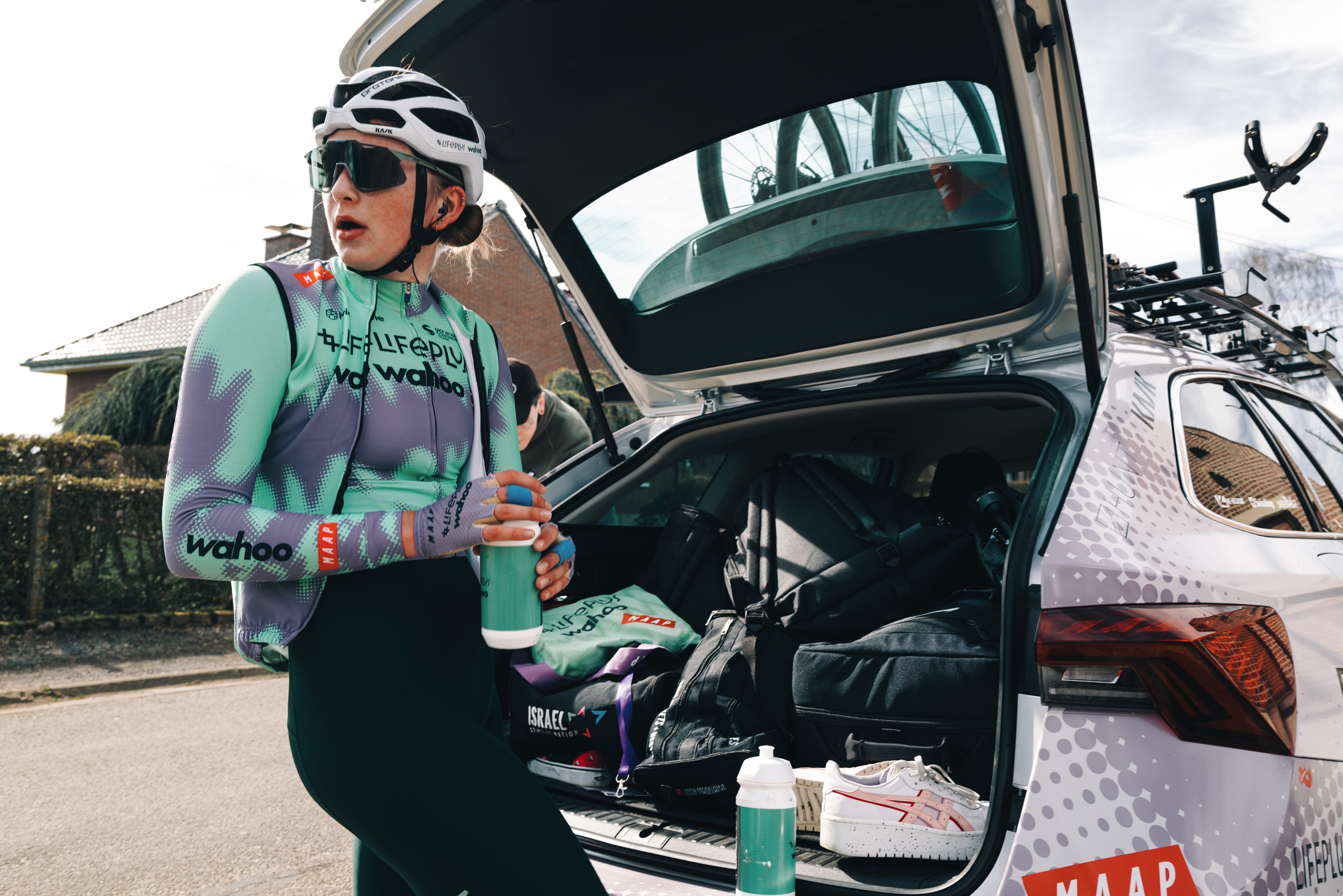Paris-Roubaix cobbled sector to receive mortar makeover to aid rider safety
Removal of vegetation will not reduce the sector's drama

Cobbles in the Arenberg forest
One of cycling’s most emblematic roads is set for a new treatment to make it safer for next year’s Paris Roubaix.
The gaps between the cobbles of the Trouée d’Arenberg will be filled with a special mortar to prevent grass growing and making the already hazardous sector more dangerous.
First used in the 1968 Paris-Roubaix, each year sees the bunch sprint en masse into the sector, and it has become one of the most anticipated moments of the Queen the Classics, with drama guaranteed.
However, with grass and vegetation sprouting between the cobbles, any rain would make the pavé stretch too hazardous to ride, and every year stories circulate that the sector is to be excluded.
Indeed recently Les Amis de Paris-Roubaix, the organisation which maintains the race’s pavé sectors, have used ‘thermal weeding’ to solve the issue.
The new treatment, which has been approved by race organisers ASO, will be both more radical and longer lasting.
“All the last editions took place under dry weather, but one day it will rain, if we do not change anything there will be lots of falls,” said President of Les Amis, Francois Soulcier in an article in French newspaper La Voix du Nord.
Get The Leadout Newsletter
The latest race content, interviews, features, reviews and expert buying guides, direct to your inbox!
“It does not mean the sector will be less difficult.”
One of only three of the toughest, five star cobbled sectors among the 29 included in the 2018 Hell of the North, the 2.4km road cuts a straight line through the Forest of Raismes, and this year came with 95 of the 275km race remaining.
If crashes don’t delay riders on the fabled sector, mechanicals will, as even the best prepared bikes suffer on the punishing surface.
Over the years many have suffered injury, and favourites’ hopes have ended when they either fall victim themselves, or are stuck behind others’ misfortune.
“Grassing in the joints between stones is becoming more important, and since we cannot use chemicals we must act differently,” said Daniel Accou a former paver who assists Les Amis in their maintenance work.
Not only will the sporting nature of the sector remain the same, the visual character will remain as the organisers seek to either match the colour of the stones or pay homage to the area’s coal mining heritage.
“We will carry out tests to choose the colour of the cement and the possible dyeing,” continued Soulcier.
The sector was first suggested for use in the race by former professional, Jean Stablinski who had been a miner in the area. Having retired in 1967 Stablinski never raced on the sector, so never experienced its fearsome reputation.
That reputation saw it banned from the race for some years because of the danger it posed to the peloton, but has been secure in the parcours in recent years.

Thank you for reading 20 articles this month* Join now for unlimited access
Enjoy your first month for just £1 / $1 / €1
*Read 5 free articles per month without a subscription

Join now for unlimited access
Try first month for just £1 / $1 / €1
Owen Rogers is an experienced journalist, covering professional cycling and specialising in women's road racing. He has followed races such as the Women's Tour and Giro d'Italia Donne, live-tweeting from Women's WorldTour events as well as providing race reports, interviews, analysis and news stories. He has also worked for race teams, to provide post race reports and communications.
-
 How to watch the Amstel Gold Race 2025: Everything you need to live stream the Dutch Classic
How to watch the Amstel Gold Race 2025: Everything you need to live stream the Dutch ClassicAll the broadcast information for the first of the Ardennes Classics on 20 April with Tom Pidcock – here's how to watch Amstel Gold Race online and on TV.
By Adam Becket
-
 Can you make a living as an American domestic road racer? A look inside the part-time professionalism of the American road peloton
Can you make a living as an American domestic road racer? A look inside the part-time professionalism of the American road pelotonAfter decades of booms and busts, the American road scene finds itself in a fragile place. We spoke to riders to understand the reality of chasing the dream on home soil
By Logan Jones-Wilkins
-
 Man hands himself in to Belgian police after throwing full water bottle at Mathieu van der Poel during Paris-Roubaix
Man hands himself in to Belgian police after throwing full water bottle at Mathieu van der Poel during Paris-Roubaix30-year-old was on Templeuve-en-Pévèle cobbled sector when television pictures showed the bottle hitting him in the face
By Tom Thewlis
-
 I rode Zwift’s new Paris-Roubaix route - how hellish was it?
I rode Zwift’s new Paris-Roubaix route - how hellish was it?The Hell of the North route has added virtual cobbles to the virtual training and racing platform
By Stephen Shrubsall
-
 Tadej Pogačar bags handful of Strava KOMs in Tour of Flanders onslaught
Tadej Pogačar bags handful of Strava KOMs in Tour of Flanders onslaughtSlovenian tops the leaderboards on several verified segments but does not get flagged for efforts
By Tom Thewlis
-
 Tweets of the week: Forget the cobbles, Paris-Roubaix is now all about goats and chicanes
Tweets of the week: Forget the cobbles, Paris-Roubaix is now all about goats and chicanesIt's a Hell of the North special in this week's social media round-up
By Tom Davidson
-
 37psi in 32mm tyres: Why tyre pressures are getting lower at Paris-Roubaix
37psi in 32mm tyres: Why tyre pressures are getting lower at Paris-RoubaixAs wider tyres become commonplace, riders are running lower pressures at the Hell of the North
By Tom Davidson
-
 'I've never seen the cobbles as bad as this' - Inside one team's Paris-Roubaix recon
'I've never seen the cobbles as bad as this' - Inside one team's Paris-Roubaix reconTom Davidson joins British Continental team Lifeplus-Wahoo as they prepare for the most feared race of the season
By Tom Davidson
-
 'I never wanted to be known as the TikTok cyclist' - how Alison Jackson wrote her legacy at Paris-Roubaix
'I never wanted to be known as the TikTok cyclist' - how Alison Jackson wrote her legacy at Paris-RoubaixThe Canadian tells Cycling Weekly how a day across the cobbles of northern France changed her career
By Tom Davidson
-
 Seven tech insights spotted at Paris-Roubaix 2023
Seven tech insights spotted at Paris-Roubaix 2023From tyre pressure systems to old-school chainrings, here's what Cycling Weekly saw at the race
By Tom Davidson